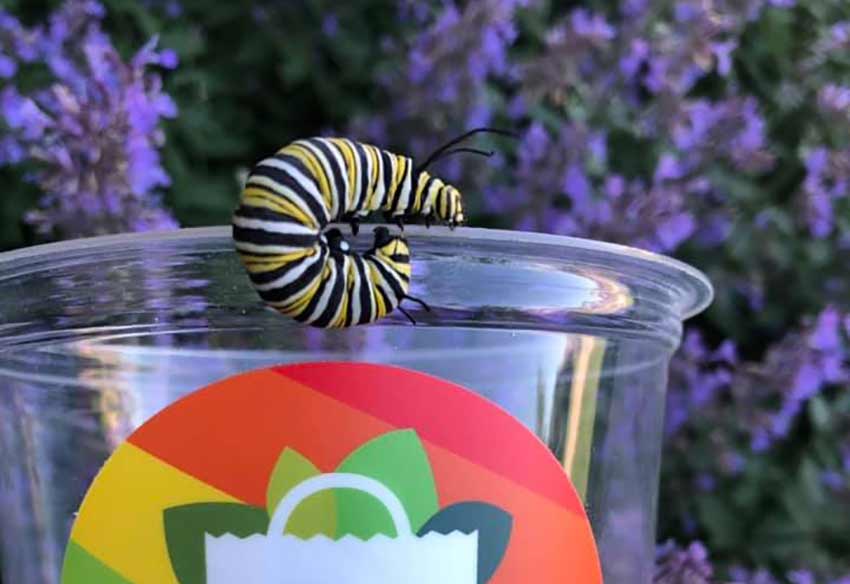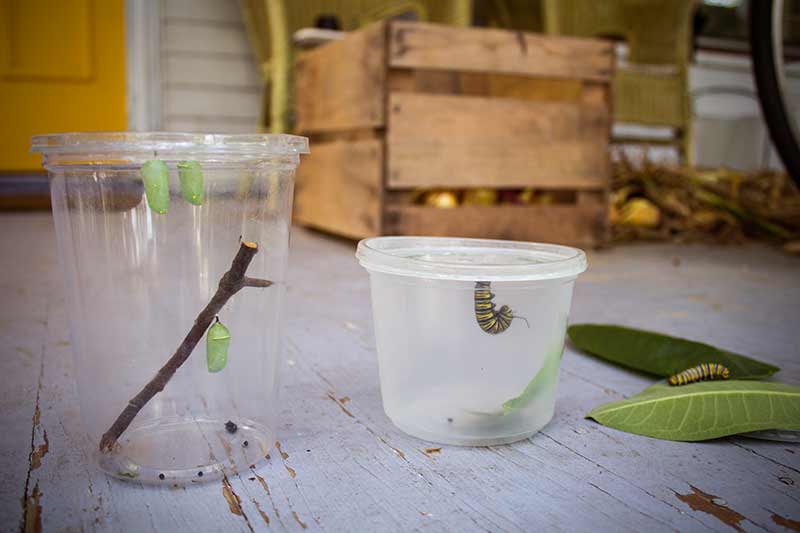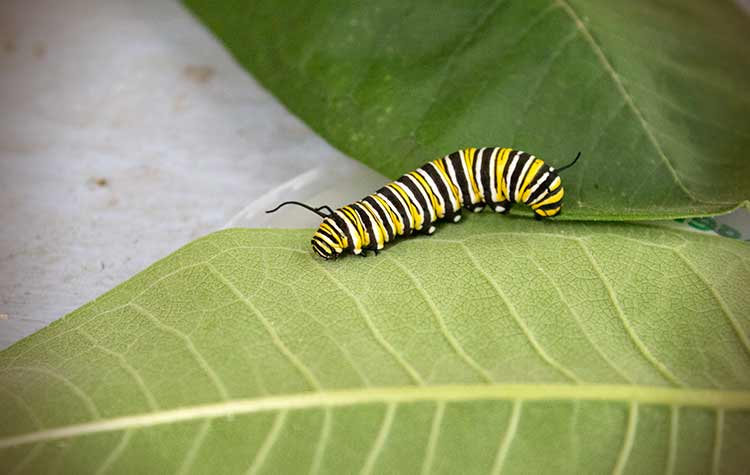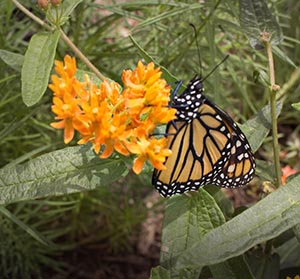From the Blog
Saving the Monarch

Butterflies have charmed us since time immemorial. Their beauty and power of transformation are amazing.
Sadly, butterflies are in trouble, their numbers dropping precipitously. The monarch population has dropped by more than 80% over the past 20 years. According to the Xerces Society for Invertebrate Conservation, there were over 1 billion monarchs 20 years ago, and now numbers have plummeted to around 56 million.
Unlike many stories of ecological distress, sympathetic humans now have the chance to help revive monarch butterfly populations.
A new group, Monarchs in Eastern Iowa, has created a campaign to gather monarch eggs, raise young caterpillars, help them “hatch” into butterflies, and release them into the wild. Patty Ankrum of Mount Vernon, Iowa, felt the call to be a “citizen scientist” and learn all about the monarchs’ life cycle in order to promote their survival. ‘Monarchists,’ as these enthusiasts are known, gather eggs deposited on milkweed leaves and place them in containers (donated by New Pioneer) to mature.

After three to five days, the eggs hatch into tiny striped caterpillars. The human ‘foster parents’ supply fresh milkweed leaves (one leaf per day for about two weeks), and clean the container. The caterpillars grow rapidly! Then the monarch caterpillar forms a green, golden striped chrysalis. Two weeks later, the adult monarch butterfly emerges from the chrysalis, pumping fluids from its body to inflate its wings. Then you set it free!
Everyone is invited to assist with the raising and release of monarchs. Contact Patty through www.monarchsineasterniowa.blogspot.com or their Facebook group to receive eggs and a container. The main limiting factor is finding enough fresh milkweed leaves for the hungry caterpillars. Milkweed formerly grew in many fields, but herbicide use has reduced the number of plants dramatically.

Hungry Little Caterpillars
Monarch caterpillars need milkweed to survive. After munching about one milkweed leaf per day, the caterpillar spins a spot of silk, attaches its back feet to it, and hangs in a "J" shape until it turns into a beautiful chrysalis.
It emerges two weeks later as a monarch butterfly and flies off to either lay eggs on milkweed, or begin its long seasonal migration to Mexico.
New Pi donates containers for raising caterpillars into monarch butterflies to the Monarchs in Eastern Iowa project to help bolster the sagging population.

This is an easy place for you to take part!
Plant milkweed for monarch habitat in your front, back, or side yard, or start a pollinator haven of butterfly, bird, and bee-friendly plants (see www.xerces.org/pollinator-conservation/plant-lists). Very importantly, reduce and eliminate herbicide and pesticide use, and encourage your neighbors and employers to do the same. We all can help save the butterflies.
